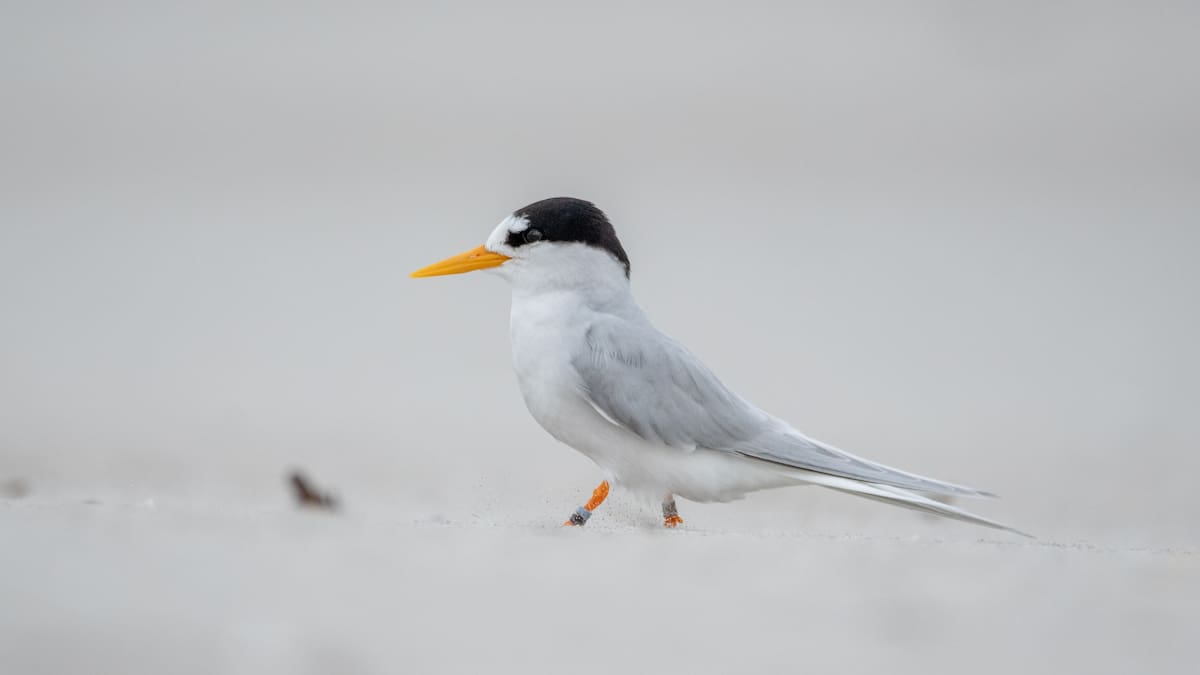The Department of Conservation had raised concerns about tara iti and other birds colliding with solar panels.
The expert panel, in its decision, said: “The risk of possible collisions by birds with solar panels is remote-to-unlikely for the species of concern, and not of a nature or scale that requires further response by the panel.”
But Forest and Bird took issue with the panel’s finding that avifauna and other at-risk shorebirds colliding with the solar farm’s solar panels was not a “potential effect of low probability”.
The planned solar farm site covers about 300ha across five land parcels in Glorit.
The farm will mostly be built on an established dairy farm on the edge of the Kaipara Harbour, with about 290,000 panels.
Erika Toleman, general counsel for Forest and Bird, said the organisation backed renewable energy “as it’s essential for tackling climate change”.
“However, projects need to be in the right place and designed to avoid serious risks to species such as the tara iti New Zealand fairy tern,” Toleman said.
“The tara iti New Zealand fairy tern is an endangered species, with only about 40 adults remaining.
“The Glorit site is too close to key habitats and flight paths for tara iti and other threatened birds.”
Forest and Bird said there were better locations that would pose less risk to the threatened species.
“We’ve appealed as we think that the panel didn’t assess the risk to tara iti properly,” Toleman said.
Contact CEO Mike Fuge. Photo / NZME
Fuge said the Department of Conservation (DoC) had been “very hot” on the issue.
“Suddenly, at the very last minute, Forest and Bird has picked up the baton that DoC were carrying and has said no, this needs an appeal,” the Contact chief told the Herald.
Fuge said it was frustrating that a $728, three-page-long court appeal could trip up the process and delay the project for a year.
The joint venture partners were just weeks away from making their final investment decision on the $300m project and planned to proceed with it before Christmas, with machinery on the ground in January.
“It’s just been tipped upside down for a year,” he said.
“Our legal system is completely and utterly jammed up.
“We had done our homework and had given this particular issue extensive consideration.
“The other thing about this is that it’s an infinitesimal risk which they’re trying to turn the project over on.
“This idea of birds flying into photovoltaic solar panels – there is no recorded incidence of that in Australasia.”
Southland wind project
Fuge said that on top of that, its Southland wind project had gone before a panel, and the company expected a decision by mid-April.
Even so, it would still be another one-year delay, he said.
“There is a shortage of generation capacity, and these are renewable energy projects.”
Fuge said his team was “not turning up to build nuclear power plants or do gold mining in national parks”.
“They’re turning up to build renewable energy projects in marginal dairy land.”
The joint venture partners had hoped to have the project on stream by 2027.
Now, it was looking like late 2028 or 2029.
Fuge said Contact remained committed to building the renewable energy infrastructure.
“While this is a setback, we are more than ever focused on making it happen.
“It’s the right thing to do for the country, the economy and the NZ households who are looking to the sector to bring down power prices.”
DoC says the tara iti/NZ fairy tern is New Zealand’s rarest endemic breeding bird.
“With fewer than 45 individuals, the tara iti is nationally critical and, despite intensive managemen,t has teetered on the brink of extinction since the 1980s,” the department says.
The tara iti, like many of New Zealand’s native species, were unique and special.
“We have more threatened species than anywhere else in the world – more than 4000 are threatened or at risk of extinction,” DoC says.
Contact said the Glorit project was expected to generate 260 gigawatt hours of energy a year – equivalent to the annual demand of about 33,000 homes.
National grid operator Transpower is also closely involved in the planning process on the grid connection point for the solar farm.
It will connect to the existing Transpower 220kV transmission network through a 2km connection from the site to the transmission network.
Lightsource BP, which develops and manages solar energy infrastructure, is a 50/50 joint venture with energy company BP.
Listen and subscribe to the Today in Business podcast – the top headlines from the NZ Herald business team summarised and delivered by an artificial intelligence (AI) voice as an easily digestible recap.

